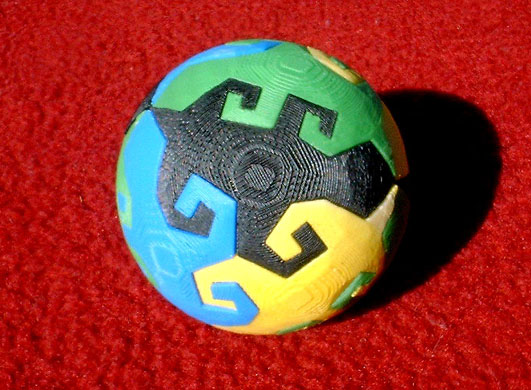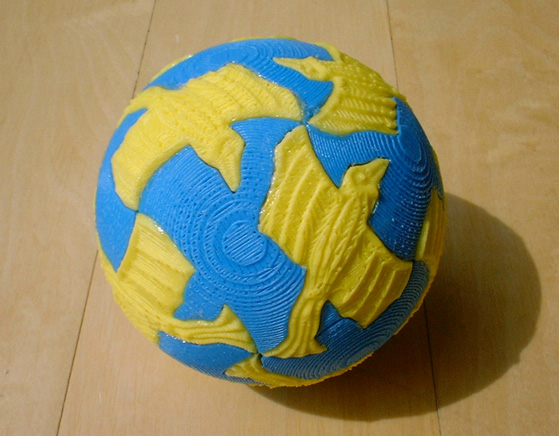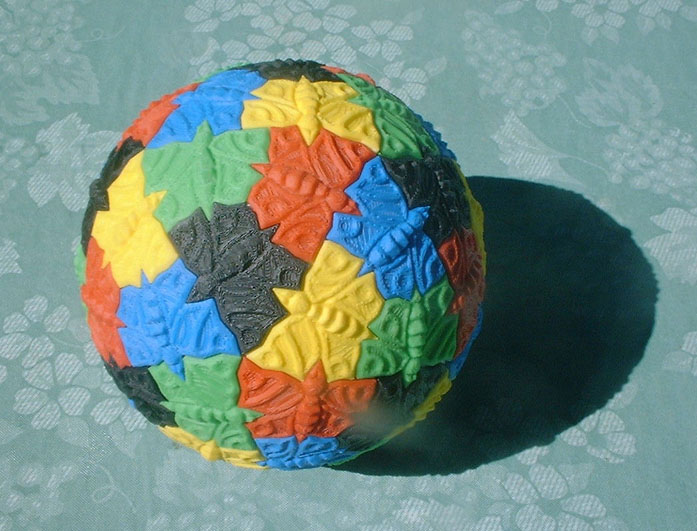
Escher tiling with 12 lizards
(tetrahedral symmetry)

Escher tiling with 24 birds
(octahedral symmetry)

Tiling with 60 butterflies
(icosahedral symmetry)
48 starfish on genus-7 surface



 Escher tiling with 12 lizards (tetrahedral symmetry) |
 Escher tiling with 24 birds (octahedral symmetry) |
 Tiling with 60 butterflies (icosahedral symmetry) |
48 starfish on genus-7 surface |